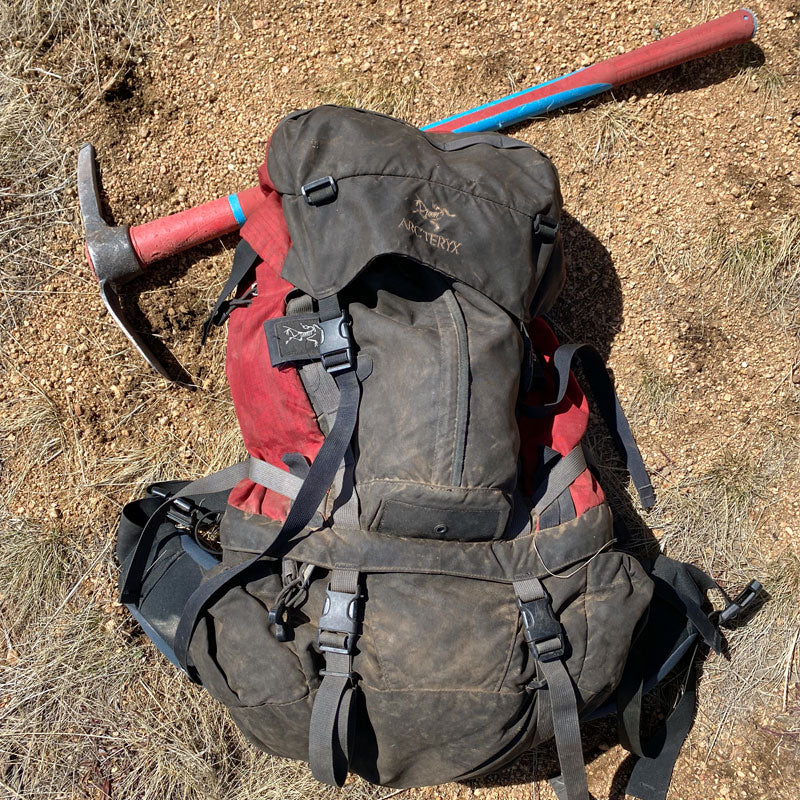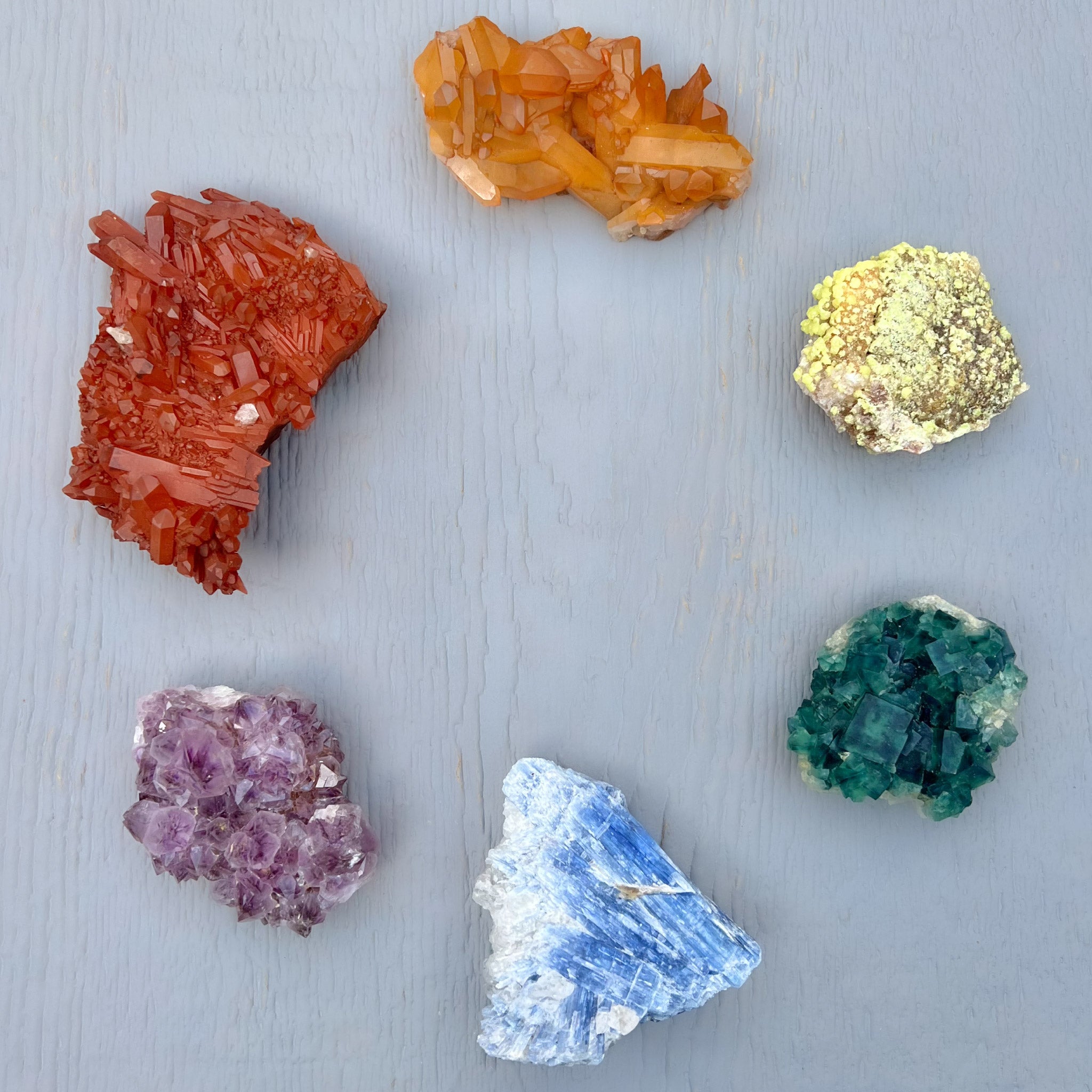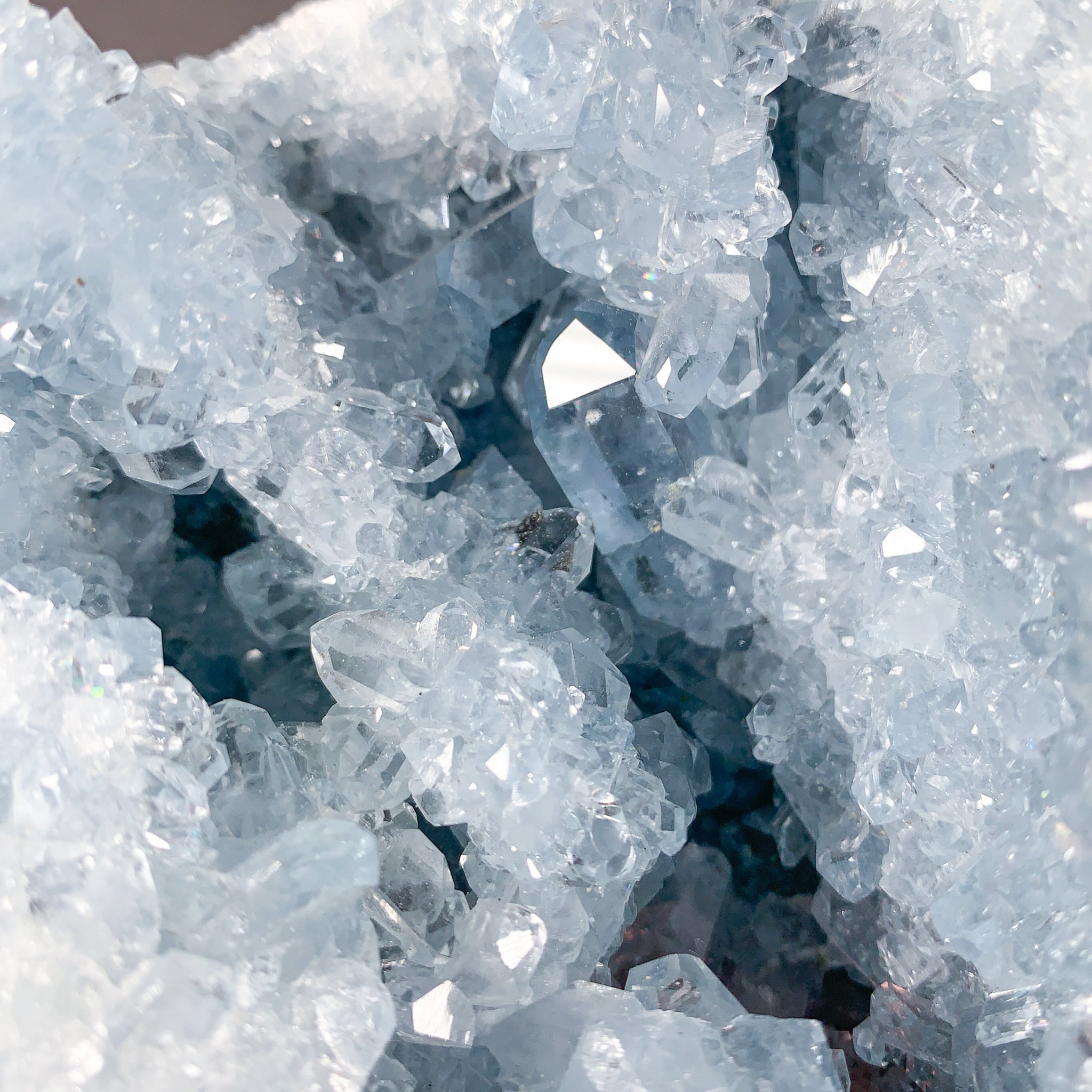Adding a crystal or fossil specimen to your collection is a great way to bring the natural beauty of our world into your home. Whether you were just gifted your very first stone or are a seasoned collector, we'll teach you how to clean and care for your geologic beauties to keep them looking fabulous for years to come!
In this guide, we'll explore 7 Steps to cleaning your crystal or fossil specimen from the durable to the delicate.

7 Tips for Cleaning Your Crystal and Fossil Collection
Whether you have one rock in your collection or have a dedicated wing in your home to store your mineral and fossil treasures, you will inevitably face the task of needing to clean your specimens. Dust, dander and pollen can all settle on your crystal surfaces, even if you have them locked away in a display case.
We'll guide you through different cleaning methods suggested for a variety of crystal, stone, and fossil types to keep your beauties looking stunning, even if they are millions of years old!
Step 1: Identify What Type of Stones You Have ~ This Will Determine the Safest Cleaning Method to Use
Understanding the type of mineral or fossil specimen you will be cleaning will determine your best and safest cleaning approach. Some crystals and fossils are extremely delicate, and require extra special care when cleaning. A good rule of thumb is, if it looks delicate or fragile, it probably is! Any crystals or fossils with small points or protrusions should be approached with extra caution.

Step 2: Set Up a Cleaning Station
If you have a display case or shelf you'll be cleaning along with your mineral or fossil specimen, setting up a cleaning station ahead of time will give you a safe space to place your specimens during the cleaning process.
It is a good idea to clear a nearby counter and place a soft towel over the surface to serves as a staging area for any specimens you want to set down as you clean your display shelf.

Step 3: Handling Specimens with Care
If you need to remove your specimen from a display shelf or cabinet to clean both the specimen and the shelf, gently pick up your specimen from the sides or base. Try not to touch or poke at crystals or fossil protrusions directly, as this could cause pieces to flake or break off.

Step 4: My Favorite Cleaning Method for Delicate Minerals ~ The Air Canister
Sometimes just lightly blowing on your mineral or fossil specimen will be enough to dislodge and remove any small dirt or dust particles that may have accumulated.
If that doesn't do the trick, try using a compressed air canister, similar to one you would use to clean a laptop keyboard.

These air canisters can produce a strong burst of air, so make sure to start at a good distance away from your specimen. Hold the canister a safe distance from your specimen, and in a light sweeping motion, blow air over your crystals. Gently spraying with puffs of air and get closer to the specimen as necessary. If you see any crystal points moving or starting to dislodge, you have gotten too close to your specimen and need to be more cautious on the next cleaning.
It is best to do this air cleaning method one mineral or fossil at a time, and away from your other specimens. This ensures dust isn't just blowing from one piece to another!

The air cleaning method is one of the safest and easiest ways to clean even the most delicate specimens in your collection, just make sure to start at a distance and work your way in closer to the specimen as necessary to get all the dust off.
In most cases, you can stop the cleaning process here. If however, you have some more durable, less fragile specimens with a thicker accumulation of dust....
Step 5: Dusters and Soft Cloths
For slightly hardier mineral or fossil specimens such as polished specimens as well as Agate and Quartz crystals or Ammonite shells that don't have fine protrusions, tiny crystals or fragile compositions, you have additional cleaning options. Microfiber cloths, dusters and swiffers can be used provided they do not have any pre-treatment or chemicals applied to them.
Make sure that your specimen is on a stable surface, or being held securely in your hand. Gently brush or sweep over your specimen with a soft cloth to remove any dirt or dust which may have accumulated.

Between the air canister and duster / cloth cleaning method, your specimens should be looking good as new!
If for some reason dirt or dust has accumulated in tiny crevices in your mineral or fossil specimen that won't budge with the methods listed above, you could proceed to Step 6.
Step 6: Water and a Soft-bristle Toothbrush
This method should ONLY be used if you are 100% confident that the mineral or fossil you are about to clean is sturdy, chemically stable, and won't react to interaction with water.
While using plain old water may seem like a basic, safe, and non-threatening method to use for cleaning specimens, you should use extreme caution before choosing this cleaning method.
Some minerals such as Halite and Selenite are water-soluble, meaning they will start to dissolve if exposed to water. Others may have a chemical reaction to the water, causing your specimen to oxidize or essentially rust!
Please be extremely cautious when using this method and only do so if you are confident in your mineral or fossil type and are certain it will not dissolve or corrode with exposure to water.
It is recommended to use room temperature distilled water for this process. Tap water may contain minerals that could negatively react with your mineral or fossil specimen, so use distilled water for this application.
Using icy cold or hot water on your specimens could cause them to experience a rapid temperature change and may cause them to crack. Using room temperature water is best.
Set aside a cup or small bowl with distilled water and a soft-bristle toothbrush. Dip the toothbrush in the water and gently brush your specimen with water, being sure to avoid any delicate or fine crystal points.

Once you have lightly brushed your specimen with water, use a soft micro-fiber towel to remove any residual water and set on a towel to dry.
Step 7: Cleaning Your Display Shelf
Not all of us have the space or budget for a fancy display case to keep dust off of our mineral specimens. Even with display cases, dust can still settle on your specimens over time, requiring the occasional cleaning. Make sure to take each specimen out one at a time and have a safe and secure spot to rest your specimens while you clean your display shelves.
I like to set up a dedicated workspace to set my specimens as I'm working. Make sure no small children or pets can access this area while you are cleaning.
If you are using household cleaners to spray your display shelves, make sure to remove all specimens before doing so. Even a slight mist from a cleaning solution could cause corrosion or damage to some minerals. Applying the cleaner to a paper towel or cloth away from your specimens would be a great way to ensure no residual mist is accidentally landing on your minerals as you clean.
Conclusion
While cleaning your specimens might seem like a tedious task, try using the process as an opportunity to re-explore the beauty of your collection! Maybe you'll discover a crystal hiding on the side of your specimen you never saw before. Or maybe you'll just fall in love with your crystals and fossils all over again :)
If you are unsure on what the best cleaning method is for a particular rock or fossil in your collection, feel free to reach out to us at info@unearthedstore.com! We will do our best to provide some additional instruction for your specific piece. And if you are looking to add another treasure to your collection, you can explore all our geologic goodies here!




